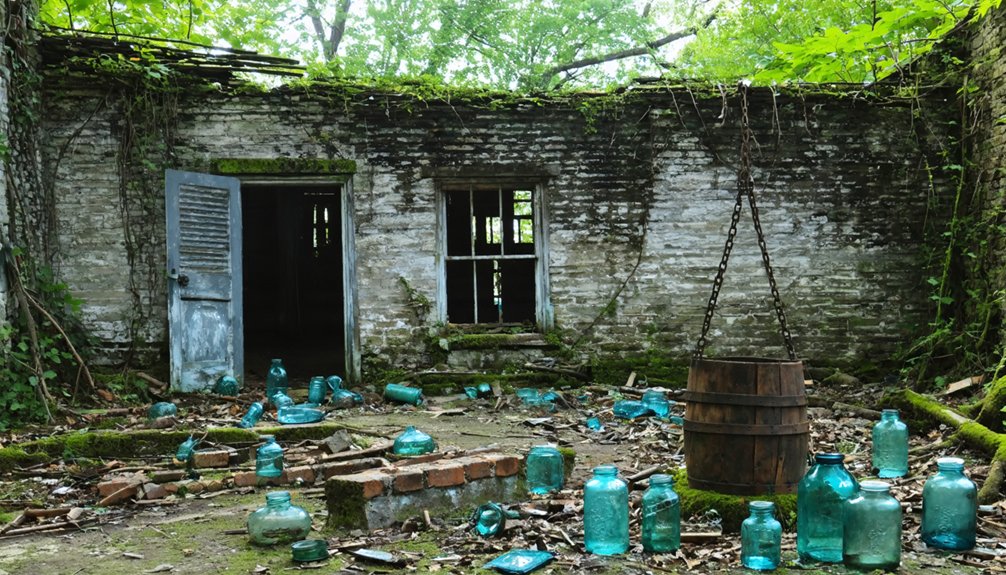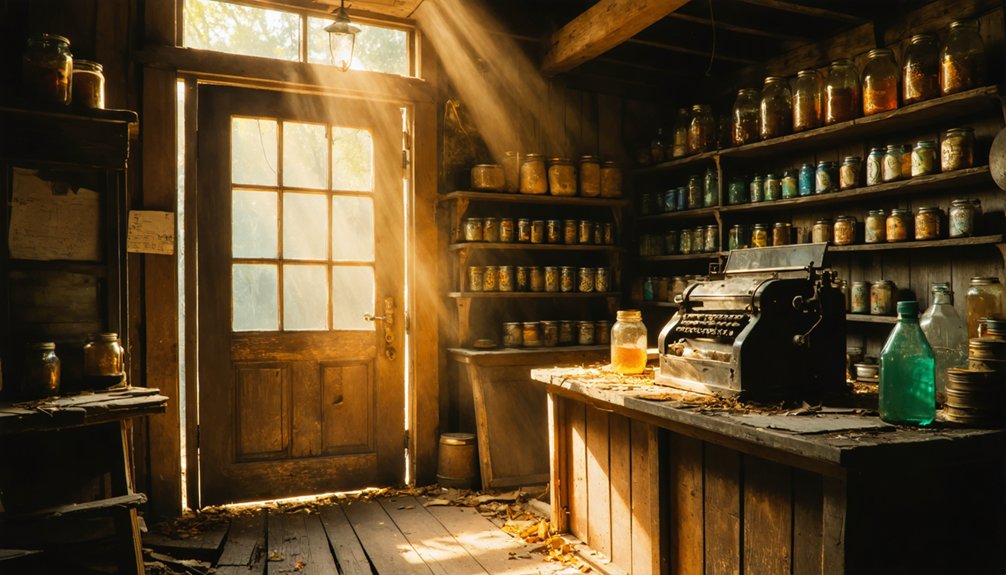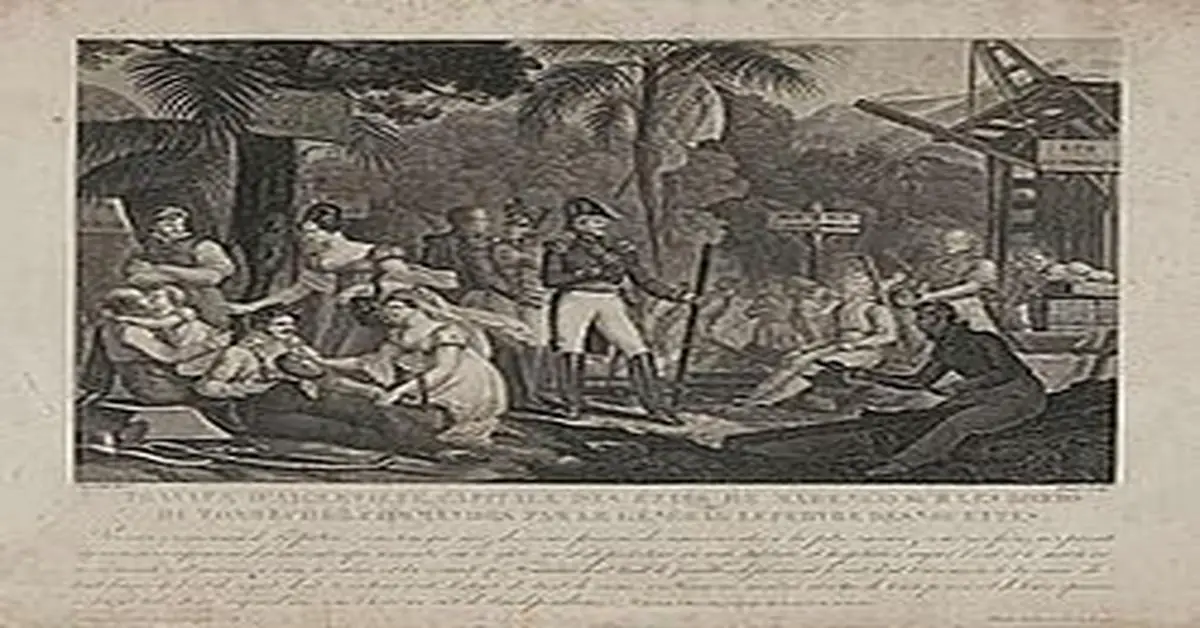You’ll find Rockcastle along Davis Creek in Tuscaloosa County, where it once flourished as a mining community in the 1800s. The settlement grew around local coal operations, with families supporting themselves through mining, small-scale farming, and bartering homemade goods. While stagecoach routes and the Old Birmingham Highway connected early residents to nearby towns, the community’s isolation from newer transportation routes ultimately led to its abandonment. The site’s archaeological remains tell a deeper story of daily pioneer life.
Key Takeaways
- Rockcastle was an agricultural and mining settlement in Tuscaloosa County, Alabama, established along Davis Creek in the early 1800s.
- The community relied heavily on coal mining, local trade, and small-scale farming before its eventual abandonment.
- Transportation isolation and railroad bypasses contributed significantly to Rockcastle’s decline as newer routes served other communities instead.
- By the 1950s, depleted coal seams and costly extraction made mining operations unsustainable, accelerating the town’s abandonment.
- Archaeological findings include mining tools, household items, and personal artifacts that document daily life in this former Alabama settlement.
The Origins of Rockcastle Settlement
While many Alabama ghost towns emerged from mining or industrial roots, Rockcastle began as a humble agricultural settlement along Davis Creek in Tuscaloosa County’s northwestern reaches.
You’ll find its story begins with Native American communities who first inhabited this land before European-American settlers arrived in the early 1800s, drawn by the fertile soil and reliable water access.
These pioneering families faced typical settlement challenges as they cleared land and established homesteads.
The area gained prominence when James Edmonds Saunders established his plantation in the mid-1820s after relocating from Georgia.
Without a prominent founding family or formal establishment date, Rockcastle’s early development centered on informal community bonds.
Unlike other settlements that grew into proper towns, this one remained a loose collection of family farms.
The settlers’ reliance on each other formed the backbone of daily life, as they shared resources and labor to survive in Alabama’s rural frontier.
The community later expanded with the construction of a lumber yard and mills, which became central to the town’s economic growth.
Life Along Davis Creek
As you venture along Davis Creek‘s winding path through western Tuscaloosa County, you’ll encounter a landscape shaped by dramatic waterfalls dropping up to 30 feet and narrow gorges carved through alternating layers of hard and soft rock.
Daily routines revolved around the mines, with men heading to work at the Rockcastle Mine while women and children tended to household duties. The area’s early inhabitants relied heavily on hunting and fishing for sustenance.
Despite poor soil conditions, families maintained small gardens and livestock to supplement their company wages.
Community dynamics centered on shared activities – church gatherings, company events, and informal social connections.
You’d find folks using Davis Creek’s waters for drinking, washing, and possibly powering small mills.
Women spent their days spinning, weaving, and creating dyes from local minerals, making the most of the region’s limited but diverse resources.
Economic Activities and Trade Routes
During Rockcastle’s peak years, the town’s economic backbone rested on three primary industries: lumber operations, small-scale manufacturing, and agricultural trade.
You’d find bustling sawmills along Rockcastle Creek processing timber, while nearby grist mills and wool-carding machines served local manufacturing needs. The town’s barter systems thrived as families traded homemade goods like jams, honey, and apple butter. Pioneer settlers established self-sufficient farming practices, growing corn and raising livestock to sustain their families.
For added income, you could join seasonal fruit picking crews in lowland orchards, sending wages home through established trade networks.
While some folks made moonshine from corn – a valuable, easily transportable product – others worked the lumber yards that defined Rockcastle’s economic sustainability.
Though attempts at coal shipping faced river challenges, the town maintained its commercial significance until railroad development shifted regional trade patterns.
Transportation Networks and Development
While stagecoach routes once connected Rockcastle to nearby settlements along the Old Birmingham Highway, you’ll find that most early trade depended on local road networks rather than direct rail access.
You can trace the town’s transportation history through its position near the Abernant Loop Road, which served as a vital link to regional markets.
The absence of a documented railroad connection suggests that Rockcastle’s development relied more heavily on river trade routes and wagon trails than the rail systems that transformed many other Alabama mining communities.
Similar to how the Middle Tennessee Railroad brought development to Toney in 1893, transportation networks played a crucial role in shaping the growth of regional communities.
River Trade Routes
The extensive river network surrounding Rockcastle served as the region’s commercial lifeline throughout its early development, with the Rockcastle and Black Warrior Rivers forming essential transportation corridors.
You’ll find that river navigation shaped the area’s economic growth, as these waterways enabled the movement of important trade commodities like coal, timber, and agricultural products between interior regions and coastal markets. The rivers supported thriving virgin timber industries that established early sawmills throughout the county. Land speculators like Jacob Myers acquired substantial property along these vital waterways.
- The Rockcastle River stretched 75 miles long and 200-250 feet wide, with tributaries like Brownstone and Skaggs Creek supporting local commerce.
- Lock and dam construction transformed treacherous routes into reliable year-round shipping channels.
- Native American trading routes along these rivers laid the groundwork for European-American settlement patterns.
- The rivers complemented overland routes like Boone’s Trace and the Wilderness Road, creating an integrated transportation network that you can still trace today.
Railroad Impact Analysis
As river commerce flourished in Rockcastle, railroad development emerged as a transformative force that would reshape the region’s economic landscape.
You’ll find that railroad connectivity became essential for bypassing geographical obstacles and linking isolated resource regions to major markets. When the Louisville & Nashville Railroad expanded through Alabama in the 1870s, it revolutionized transportation networks and accelerated industrial growth. The Panic of 1873 created financial hurdles for railway expansion, though L&N maintained its commitment to supporting Birmingham’s growing iron industry.
The integration of rail lines created new opportunities for coal and iron operations, connecting mining districts to manufacturing centers and ports. The first rail tracks were laid at Muscle Shoals in 1832, marking the beginning of Alabama’s railroad era.
You can trace how these railways attracted additional industries and sparked urban development along their routes. While some communities thrived with new rail access, others like Rockcastle faced decline as transportation patterns shifted, illustrating how railroad development could make or break a town’s economic future.
Stagecoach Stop Development
Long before railroad tracks crisscrossed Alabama’s landscape, stagecoach stops dotted the region’s primitive transportation network, transforming Native American pathways into important corridors of commerce and communication.
You’ll find that these stops weren’t just places to change horses – they evolved into vital community hubs that shaped early settlement patterns. The Rowan House Stagecoach Stop remains a testament to this era, offering modern visitors a glimpse into the past. The stagecoach architecture typically included station houses, blacksmith shops, and corrals, creating self-sufficient outposts along travel routes.
- Each stop served as a significant relay point where fresh horses replaced tired teams
- Facilities doubled as post offices and taverns, becoming social centers for news exchange
- Blacksmiths provided important repairs for both coaches and horse equipment
- Station houses offered shelter and storage, supporting both passenger and cargo transport
The Decline and Abandonment Era
You’ll find that Rockcastle’s decline followed a familiar pattern seen in other Alabama ghost towns when new transportation routes bypassed the settlement.
The town’s isolation grew as railway lines and improved roads developed elsewhere, cutting off essential trade connections that had once sustained the community.
While specific mining activities aren’t well documented for Rockcastle, the depletion of local resources likely hastened the town’s abandonment, as happened with many similar settlements in Tuscaloosa County.
Transportation Routes Shifted
During the mid-20th century, Rockcastle’s fate became intertwined with dramatic shifts in transportation infrastructure that would ultimately seal its destiny.
The transportation evolution hit the town hard as railroads declined and new highways redirected traffic elsewhere, creating significant connectivity barriers for local residents and businesses.
- Railroad services dwindled while modern highways bypassed the town completely
- Postal routes changed, eliminating a crucial communication and commerce link
- Coal and iron industry transportation needs shifted away from traditional rail systems
- Local businesses couldn’t adapt to new logistics patterns, leading to closures
You’ll find that this transformation didn’t just affect travel – it struck at the heart of Rockcastle’s economy.
Without reliable transportation access, residents faced limited employment options and reduced access to markets, pushing many to relocate to better-connected areas.
Mining Resources Depleted
As coal seams in Rockcastle began thinning out by the 1950s, the town’s mining industry faced an irreversible decline that would ultimately lead to its abandonment.
The challenge of resource management became evident as easily accessible deposits were exhausted, leaving only deeper, more complex seams that required intensive labor and higher operational costs.
You’ll find this economic shift was particularly harsh on Rockcastle’s mining operations. The remaining coal deposits became increasingly dangerous and expensive to extract, while competition from cheaper sources outside Alabama further squeezed local profits.
Archaeological Discoveries and Remains

Recent archaeological excavations in Rockcastle’s riverbeds have revealed a treasure trove of artifacts that tell the story of this former Alabama mining town.
Through careful artifact analysis, you’ll find evidence of both industrial might and everyday life, from coal mining equipment to children’s toys. These discoveries paint a vivid picture of Rockcastle’s cultural heritage, preserved by the river’s natural catch points and waterlogged conditions.
- Coal mining tools, equipment fragments, and miner tags showcase the town’s industrial backbone.
- Personal items like purses, wallets, and prosthetic limbs offer glimpses into individual lives.
- Children’s toys and marbles confirm that complete families, not just workers, called Rockcastle home.
- Medicine bottles, boot flasks, and household ceramics reveal daily routines and health practices.
Historical Significance in Tuscaloosa County
The rich tapestry of Tuscaloosa County’s history intertwines deeply with Rockcastle’s own story, beginning with the county’s formation in 1818 from Creek and Choctaw lands. The area’s cultural influences stem from early settlers who arrived from Virginia, the Carolinas, and Georgia, establishing communities throughout the region.
Rockcastle’s heritage became firmly rooted in the county’s industrial evolution when coal mining operations expanded in the 1870s. The town’s significance grew with the arrival of the Alabama Great Southern and L&N railroads, which connected the community to larger industrial centers.
The tragic mine explosion of 1914 at Rock Castle Mine marked a pivotal moment in the county’s mining history, highlighting both the economic importance and human cost of the industry that shaped Tuscaloosa County’s development.
Preserving Rockcastle’s Legacy

Preserving Rockcastle’s legacy remains a challenging endeavor, marked by scattered artifacts and fragmented documentation efforts.
Time and neglect threaten what remains of Rockcastle’s history, as pieces of its past slip through our fingers.
You’ll find that community engagement has been limited to sporadic artifact donations and storytelling traditions, with the Lawrence County Archives serving as the primary custodian of surviving pieces. A 100-pound cast iron corbel, donated in 2021, stands as one of the few tangible links to this historic structure’s grandeur.
- The original 96 cast iron corbels have largely vanished, with only a fraction remaining.
- Architectural elements live on in Decatur homes, repurposed from the castle’s demolition.
- No formal archaeological surveys have explored the site’s remaining potential.
- Ghost stories and local lore keep the cultural memory alive through informal preservation.
The lack of organized preservation efforts and dedicated funding continues to challenge artifact preservation initiatives.
Frequently Asked Questions
Are There Any Surviving Photographs of Rockcastle During Its Active Years?
You won’t find any confirmed surviving photographs from Rockcastle’s active years. Despite ghostly imagery in folklore and historical documentation of similar plantations, no authentic pictures exist from its operational period.
What Happened to the Families Who Originally Lived in Rockcastle?
While families’ migration scattered them to urban centers like Tuscaloosa and Birmingham, you’d find their descendants’ stories woven into neighboring communities, though most records of their exact movements remain untraceable.
Were There Any Notable Crimes or Tragic Events in Rockcastle?
You won’t find verified records of major crimes or tragedies in historical documents. While unsolved mysteries and local legends might exist, there’s no concrete evidence of notable incidents from Rockcastle’s past.
Is the Rockcastle Site Accessible to Visitors Today?
Like a locked treasure chest, this ghost town’s visitor access is highly restricted. You’ll need permission from Daniel Boone National Forest since it’s protected conservation land focused on preserving endangered species.
What Native American Tribes Inhabited the Area Before Rockcastle’s Establishment?
You’d have found significant Creek habitation throughout the area, with their towns and settlements dominating the landscape, while Cherokee presence extended into the northern portions near the Tennessee Valley region.
References
- https://digitalalabama.com/alabama-ghost-towns/alabama-ghost-towns/9449
- https://www.onlyinyourstate.com/trip-ideas/alabama/ghost-town-autumn-day-trip-al
- https://www.youtube.com/watch?v=Hcbb0-o2-f4
- https://digitalalabama.com/article/alabama-ghost-towns
- https://freepages.history.rootsweb.com/~gtusa/usa/al.htm
- https://en.wikipedia.org/wiki/List_of_ghost_towns_in_Alabama
- https://en.wikipedia.org/wiki/Rocky_Hill_Castle
- https://www.youtube.com/watch?v=00q6-czAkcY
- https://digitalalabama.com/article/alabama-ghost-towns/page/4
- https://www.rkci.org/library/rockcastle_history.shtml


